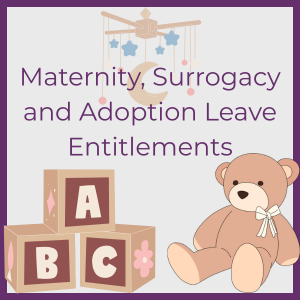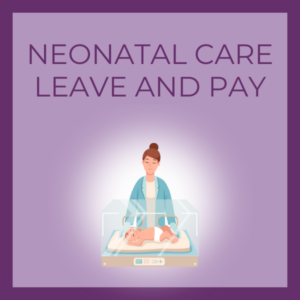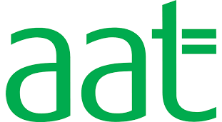Since tuition fees came into force for all students studying at UK universities in 1998, student loan repayment obligations have become a crucial responsibility for HR managers and payroll officers.
Student loan repayments operate differently to the repayment of bank loans because, unlike other loans, repayments are deducted from an employee’s salary at payroll. This means that employers have a responsibility to accurately calculate the repayment obligations of any employee who holds a loan with the Student Loans Company (SLC).
Here, we answer common questions regarding employers’ student loan obligations – how to ensure deductions are correct, what to do if an employee has more than one loan, and when to stop deductions.
How do I find out what student loan plan my employees are on?

Student loan repayments only begin when the borrower is in employment and earning over a certain repayment threshold. Self-employed and freelancers will account for student loan obligations in their own tax return, so this information is relevant to employees on full-time, part-time and fixed-term contracts.
When you hire a new employee, it is vital that as soon as they start work, you establish whether they have a loan with the SLC, and if so, what plan their loan comes under.
All student loans come under one of four plans, and effective from April 2021, the thresholds for making student loan deductions are:
- Plan 1 – £19,895 annually (£1,657.91 a month or £382.59 a week)
- Plan 2 – £27,295 annually (£2,274.58 a month or £524.90 a week)
- Plan 4 – £25,000 annually (£2,083.33 a month or £480.76 a week)
For plans 1, 2 and 4, employees repay 9% of the amount they earn over the threshold.
Postgraduate loans (PGL) operate slightly differently, with employees repaying 6% of the amount they earn over the threshold– £21,000 (£1,750 a month or £403.84 a week)
Even if your employee will not be earning over the threshold required to begin repayments at your company, it is still your duty to gather information regarding their student loan obligations. If an employee receives a promotion, or a bonus that takes them over the threshold, then they will be required to begin repayments to the SLC, which you must deduct as the employer.
My employee doesn’t know what student loan plan they are on
If an employee is unsure of what plan they are on, direct them to the Gov.Uk student loan repayment advice. If they still cannot tell you, log their loan under plan 1 in your payroll software until you get a student loan start notice (SL1) from HMRC.
What should I do if an employee has more than one loan with the SLC?
Some people have more than one student loan. Often, this will be an undergraduate loan under Plans 1, 2 or 4, combined with a postgraduate loan.
Where employees have loans under more than one plan, with different repayment thresholds, it can be hard to know when to start making deductions, and what deductions to make. The government advises that, in these cases, you should start deductions for the plan with the lowest recovery threshold until you get a SL1 or PGL1 start notice for the employee, which will detail exactly what deductions you are required to make.
My employee didn’t tell me they were a student loan borrower – should I make deductions in arrears?
If you receive a P45 indicating student loan obligations for an employee after they start working for you, and the employee did not indicate on their starter information that they were a student loan borrower, the first thing you should do is confirm their plan type.
If they are already on your payroll and have been receiving their salary without SLC deductions, you should not make any deductions in arrears, but do start making deductions from the next pay day.
How do I know when to stop repayments?
You can stop making student loan or PGL deductions when:
- You receive a SL2 or PGL2 ‘stop notice’ from HMRC
In some exceptional circumstances, HMRC can tell you to stop making deductions, but in these cases they will tell you in writing, or by phone and then confirm in writing.
You can use any basic PAYE tool to edit the employee’s details, removing the student loan or PGL borrower status and adding the SL2 or PGL2 stop notice. You should stop making deductions on the first available pay day after the deduction stop date indicated on the stop notice.
My employee thinks they should have finished repaying their loan, but I haven’t received a stop notice
While repayments are collected by employers, on behalf of HMRC, the loan’s repayment progress is tracked by the SLC. Unfortunately, the SLC has received criticism for administrative delays. In some instances, the SLC has failed to promptly tell HMRC that a loan has been cleared, and therefore to stop taking payments. These delays in sending employers SL2 or PGL2 stop notices have resulted in many SLC borrowers overpaying on their loan, sometimes for over a year.
It is therefore vital to keep good records of all SLC deductions and to encourage your employees to do the same, particularly if they are nearing the end of their loan repayment. Employers can also advise their staff that SLC borrowers can change their payment method to direct debit in the final year of repayment – an option offered by SLC to help tackle overpayment issues.
While these steps help to prevent student loan overpayment, if it does occur, the SLC can return the correct money, with interest, to those affected. Information about how to ask for a refund from SLC is available on Gov.Uk.
The world of student loan repayments can be complicated and difficult to navigate, especially when you have many employees on varying salaries, with different student loan plans, often with more than one loan. AMR Bookkeeping Solutions can help with student loan deductions, and any other aspect of your company’s bookkeeping.
If you would like to chat about the services we offer, please give us a call on 01892 559480, or get in touch via our online enquiry form here.







